Motorcycle Investor mag
Subscribe to our free email news
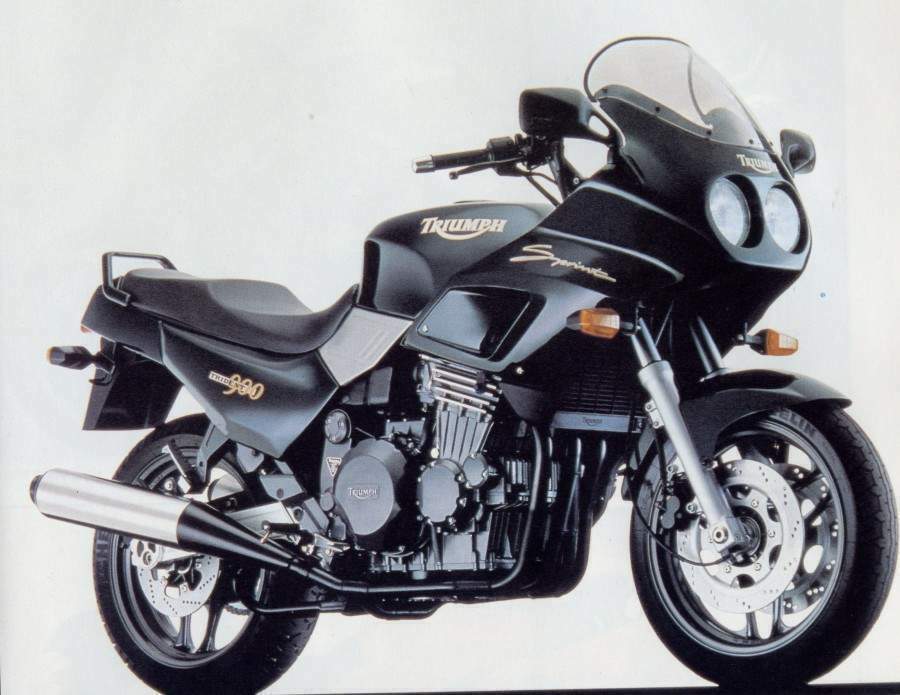
Burner bikes
(August 2020)
by Guy 'Guido' Allen
Every good classic motorcycle collection should have a
sacrificial bike, a burner
We’ve all heard of burner phones, right? Popular in crime and spy flicks, they’re the gadgets you buy cheap under a false name at the local corner store, use briefly and then toss away before the authorities can use it to track you down. It’s an attractive idea: use and flick with no long-term care.
It kind of works for motorcycles as well, if you can bring yourself to be a little mercenary with them. As a bike nut who accidently became a collector, in recent years I’ve tended to have at least one, often two, in my fleet. Why? Because it makes some sort of sense (in my head at least) to have something there that can be relied on to start every damn morning and tackle the urban jungle or a long trip without fuss. Plus, it’s not the end of the world, financially or emotionally, if it’s damaged or stolen. It’s acting as a kind of insurance for the rest of the fleet.
So what’s the criteria for such a beast? There are a few. It needs to be tough and reliable – there’s no point in having it if you’re constantly having to indulge its little design foibles. It also has to be reasonably priced, which in turn implies this is something that is in plentiful supply and not yet seen as collectible. There are lots of options out there, so let’s go hunting, shall we?
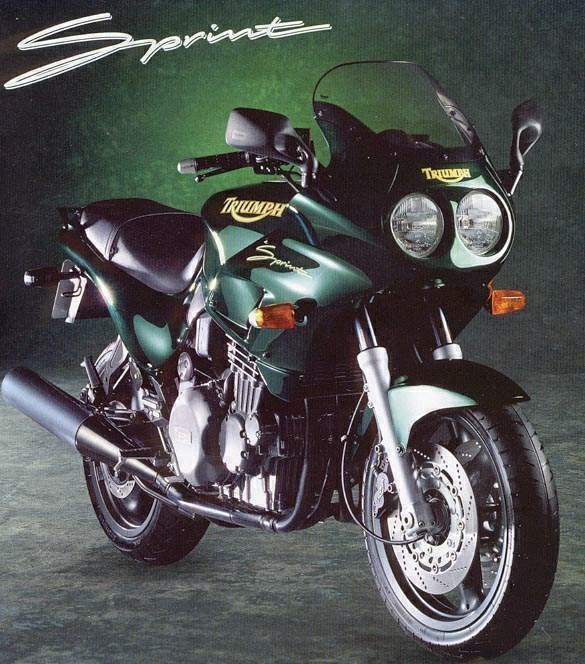
Triumph Sprint 900
Triumph's Hinckley relaunch through the 1990s presented us
with machines that weren't necessarily cutting edge, but
they were generally super-tough and well made.
The one achilles heel was the starter sprag clutch could let go, which is expensive to fix – think a little over $2k. However, the vast majority should not now present a problem as the causes of failure have generally been dealt with, in the first instance by a factory recall of ignitor units.
That said, the build quality for the time was very good and the engineering was generally top notch. We know of examples of both the triple and four-cylinder units getting past 200,000km without trouble. The triples in particular have an addictive growl to them
The Sprint is essentially a dressed-up 900 Trident and these are big happy all-rounders, very much in the tradition of the Universal Japanese Motorcycle, except they're British! With 98 claimed horses on tap, they're actually fairly quick, with acceptable braking and handling. Plus, with a 25 litre fuel tank, they have exceptional range. In Australia, $4k will get you a good one.
Basic stats: 885cc inline triple, 73kW, 240kg wet
For: Lots of character, tough and quick
Against: Sprag issues should be sorted by now
Prices: $4k
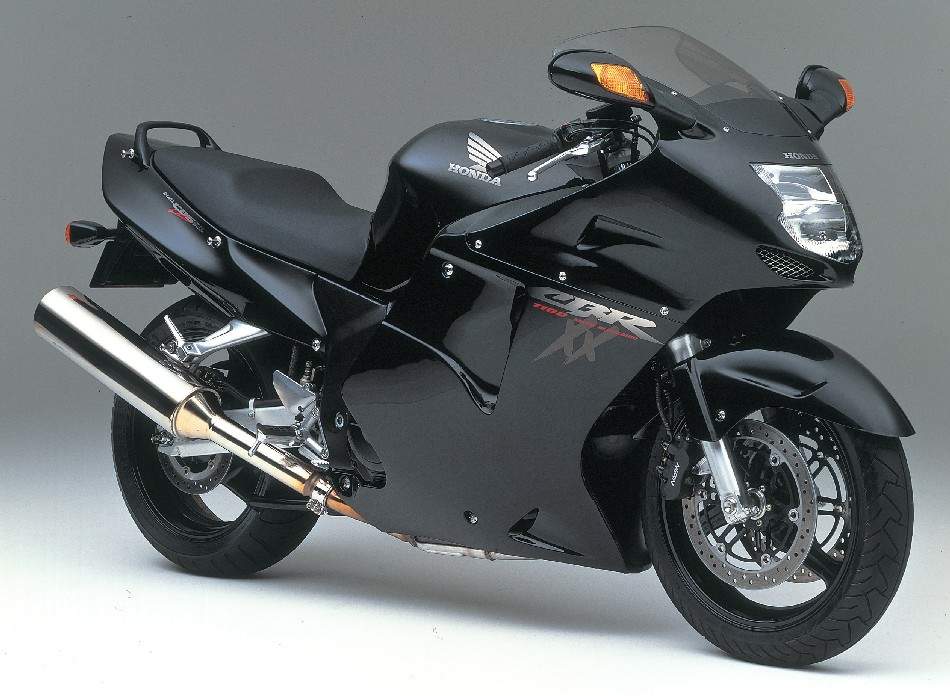
Honda CBR1100XX Blackbird
This was once Honda’s glamour bike, the performance
flagship, named after the world’s fastest spy plane, the
Lockheed SR-71 Blackbird, and for a brief time was the
quickest thing you could buy on two wheels.
One of Honda’s primary aims with this machine was to knock Kawasaki’s ZZ-R1100 of its perch as the world’s fastest motorcycle, and it succeeded. The gap wasn’t big, but the end result was an independently-measured 287km/h top speed.
There was nothing spectacularly innovative about the design. Housed in a twin spar aluminium frame was a pretty straight-forward inline four 1100 running 16 valves and a bank of carburettors. The latter were swapped out for Honda’s own fuel injection for the subsequent couple of models.
What made the Blackbird a little special was that it was a highly-refined design and a well-assembled product. Over time it’s proven to be one of Honda’s best-ever efforts, if you rate it on performance and longevity.
Suzuki’s Hayabusa snatched away the top speed crown soon enough, but the Blackbird continued to score solid sales, with a production run from 1996 to 2007 across three model variants.
The CBR is smooth, very quick, and feels reasonably modern. Major service intervals (as in valve adjustment) are 24,000km and demands in the meantime are fairly modest. High mileages shouldn’t be a big worry, so long as the bike has been looked after. They’re a genuine all-rounder that is undemanding to own.
Early ones may one day be collectible, but they’re not for the moment, and there is a huge supply of these things on the market. Really, if you had between four and five kay in your pocket, you would have a big choice.
Basic stats: 1137cc inline four, 122kW, 250kg wet
For: A genuinely good ride. Robust
Against: Will eat tyres if you’re heavy on the throttle
Prices: $4-5k and up
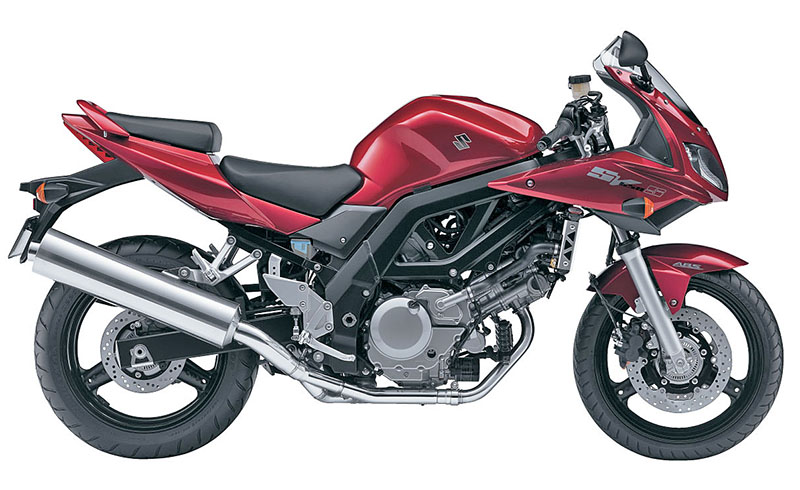
Suzuki SV650 & V-Strom 650
There is method in our apparent madness in lumping
together the SV and V-Strom, and that is they share
numerous components, the most significant of which is the
underlying engine. And that unit is by far the highlight
of the entire series.
It may seem like hyperbole, but Suzuki’s mid-range V-twin is one of the nicest powerplants ever to come out of Japan. Over time, variants have powered naked and half-faired SVs across three generations, the Gladius, plus a couple of generations of V-Strom.
I know from experience that at 90,000-100,000km, one that’s had basic servicing is a very long way from worn out and still feels fresh. Meanwhile, they generally deliver very accessible power across a good rev range and are reasonably easy on the juice.
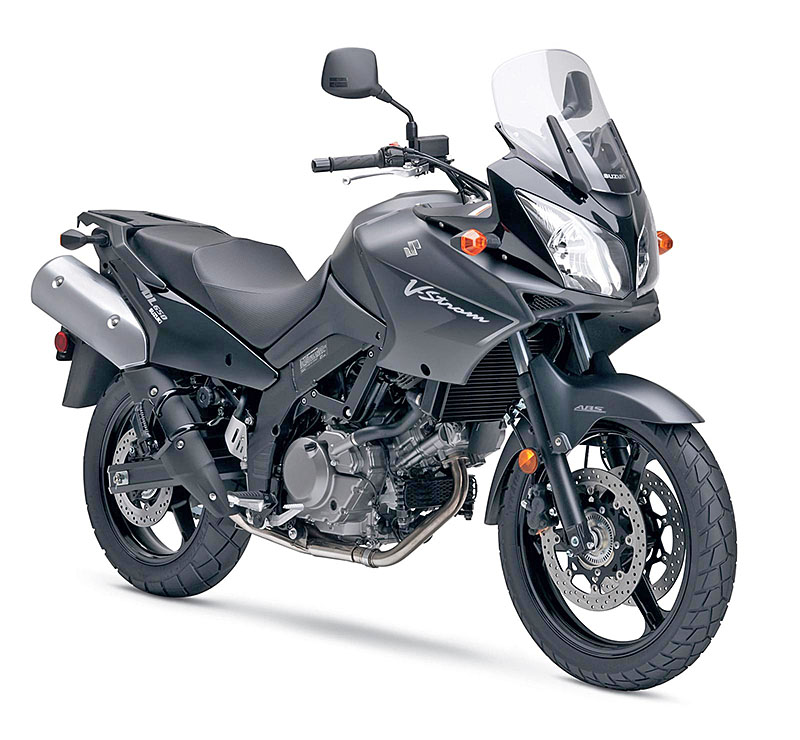
SVs date back to 1999, while the V-Strom adventure tourer version got underway for 2004 model year. If you’re in the market for one, it pays to do a little research, as there are numerous variants out there. As a general rule, I prefer the second-gen SVs from 2003, which had numerous useful updates. The V-Strom also benefited from that development path.
There are versions with and without ABS, and in LAMs trim. A note on the latter: Suzuki produced properly tuned learner versions, which had decent performance, rather than strangling the pre-existing bike. That means it remains useful and enjoyable long after your restriction period is over.
Generally the series were built to a price, so we’re not talking the latest and greatest suspension or anything much in the way of techno wow-factor. Think more along the lines of happy and very capable mounts.
Potentially, these can be a very inexpensive set of wheels. When we checked, there were several workable examples on offer for under $3k. Given the huge supply, I’d do a bit of homework first, so you know which variant to target, then find the best example you can within the budget. If it’s been serviced, it should be fine.
Basic stats: 645cc v-twin, 48-56kW,195-220kg wet
For: Great engine, ultra-reliable
Against: No fancy tech
Prices: $3k-plus
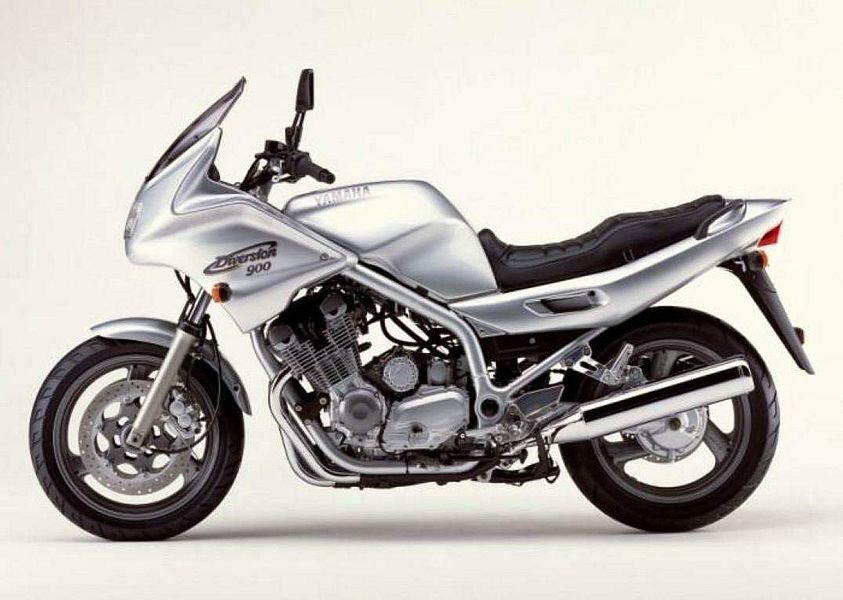
Yamaha XJ900S Diversion
If you search online for ‘universal Japanese motorcycle’
this is what should appear. In many respects, the ‘Divi’
(as its fans called it) was a very old-fashioned
motorcycle that formed the backbone of the dominance of
the Japanese industry from the 1970s and onward.
Housed in a steel double-cradle frame was an air-cooled inline four with two valves per cylinder, fed by a bank of carburettors. No fancy electronics on this one. The transmission was just five speeds and final drive was an ultra-low maintenance shaft.
As for suspension, you scored a very conventional non-adjustable front fork and a twin shock rear with ride height adjustment. Oh yes, and the front brakes were just twin-piston units. That was your lot.
Built 1994 to 2004, it was the second-generation XJ900 and was very highly regarded by anyone who wanted cheap-to-buy transport that still had enough performance to go respectably fast with a load on board. It’s one of those models that you would target if you were heading overseas and planned to buy something to ride over there.
For all the same reasons, it’s a top burner. While it may be a little outdated, and the handling less than perfect, it will be going long after many of its faster and fancier rivals have ground to a halt.
A lot of the offerings on the market have huge miles, but you can still score a good one for $3-5k.
Basic stats: 892cc inline four, 66kW, 240kg wet
For: Versatile and bulletproof
Against: Average suspension
Prices: $3-5k
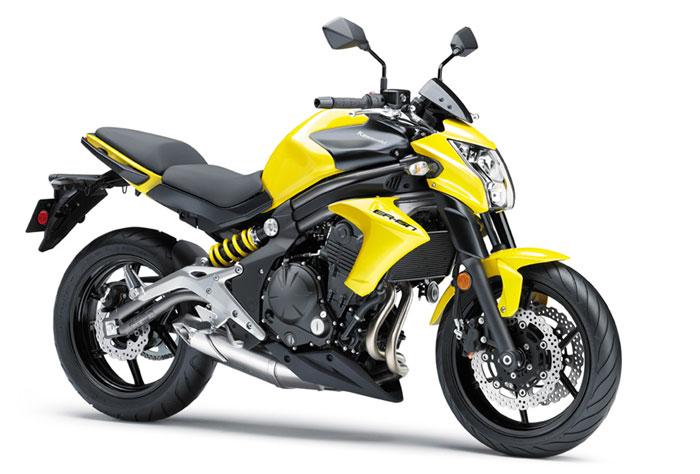
Kawasaki ER-6n ABS
What we’re looking at here is the later, second-gen bikes
from 2012 (some with a 2011 build date) and finishing up
in 2016. They’re reasonably current, can be had with ABS,
and are a well-proven platform.
There is in fact nothing wrong with the first-gen ER-6, other than its looks which seem more dated.
As for the 2012 bike, it is one of those machines that adds up to being a little more than a quick scan of the specs might suggest. While the power isn’t earth-shattering at 52kW, it is delivered across a broad rev range and this is one machine that could be hustled through a set of corners at a very respectable pace.
The suspension is only okay rather than excellent, while the brakes are sharp and powerful. I wouldn’t be chasing more from the suspension until the bike had a fair few miles under its wheels.
As a package, it feels light and flickable and is one of those machines that is a very easy thing to live with. Fuel usage is very modest, the range from the 16lt tank is more than adequate and servicing bills should be relatively low.
There is a good supply of them out there, with prices starting at about $4k for something good – not a huge amount for a relatively modern machine.
Basic stats: 649cc inline twin, 52kW, 205kg wet
For: Light and versatile, ABS
Against: Not hugely powerful
Prices: $4-7k
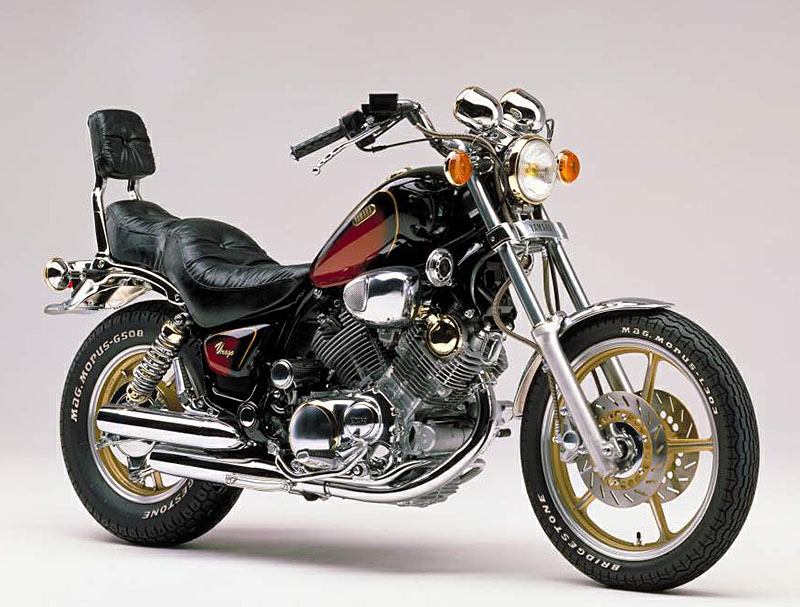
Yamaha XV1100 Virago
For a while there, it seemed like there were nearly as
many Viragos as Harleys on the road. From their launch, in
1986, they seemed to fill some pent-up demand for reliable
cruisers that didn’t cost a fortune and a fair number
ended up in the hands of the then just-emerging Ulysses
Club.
While its popularity tapered off over time, the Virago 1100 nevertheless enjoyed a 13-year run and survived with relatively minor updates along the way.
As a package, it had appeal for anyone who wanted the big V-twin cruiser experience, with minimal maintenance. The two-valve per cylinder air-cooled engine was simple enough to service and the shaft drive meant there was no belt or chain to deal with.
What helped the Virago hold its niche was the packaging. At 1100cc and around 240kg wet, it counted as a litre-plus bike, but in cruiser terms was a mid-sized package that was relatively easy to handle. So anyone with age or a (lack of) height working against them found this manageable.
Meanwhile, it was actually a very capable machine. Though no fire-breather, max torque chimed in at just 3000 revs and it could give many bigger cruisers a serious run for their money. It may look a little dated, but the underlying formula still works and you can pick one up for $4-6k.
Basic stats: 1063cc v-twin, 45kW, 240kg wet
For: One of the better sorted cruisers of its era
Against: Usual cruiser ride position
Prices: $4-6k
.jpg)
Honda VTR1000 Firestorm
Back in the mid-1990s, both Suzuki and Honda decided there
was room in the litre-class sports bike market for some
serious competitors to Ducati. Enter toys like the VTR1000
and Suzuki’s TL1000 series.
Though Honda went on to develop a couple of truly special superbike variants in the SP1 and SP2, the sales numbers for the ‘cooking’ versions may not have been quite as high as they hoped.
There was nothing essentially wrong with the formula. Far from it. The first VTR of 1997 was a genuinely quick bit of kit – not Fireblade quick, perhaps, but not far behind. Where it lacked the sheer horsepower and precision of the Blade, it made up for it with loads of character from the big twin, exceptional mid-range grunt, and a chassis that invited you to play rather than race.
To give you some idea of where they sat in the market, a VTR1000F in 1997 cost $16,000 plus ORC, against $18,500 for a Ducati SS and a whopping $27,000 for a 916 Strada. And the latter in reality was no quicker in a straight line.
So while the VTR1000F may not have offered absolute premium spec on the chassis, it was still fast and very good value. High-milers should have camchain tensioners checked.
From 2001 the bike got a much-needed 3lt boost in fuel capacity (they love their petrol!) along with a slightly milder ride position and updated fork internals.
They’re mechanically tough and in plentiful supply, so anything from $3k up will score a lot of bang for your buck.
Basic stats: 996cc v-twin, 80kW, 210kg wet
For: Fast and great fun
Against: Thirsty
Prices: $3-8k
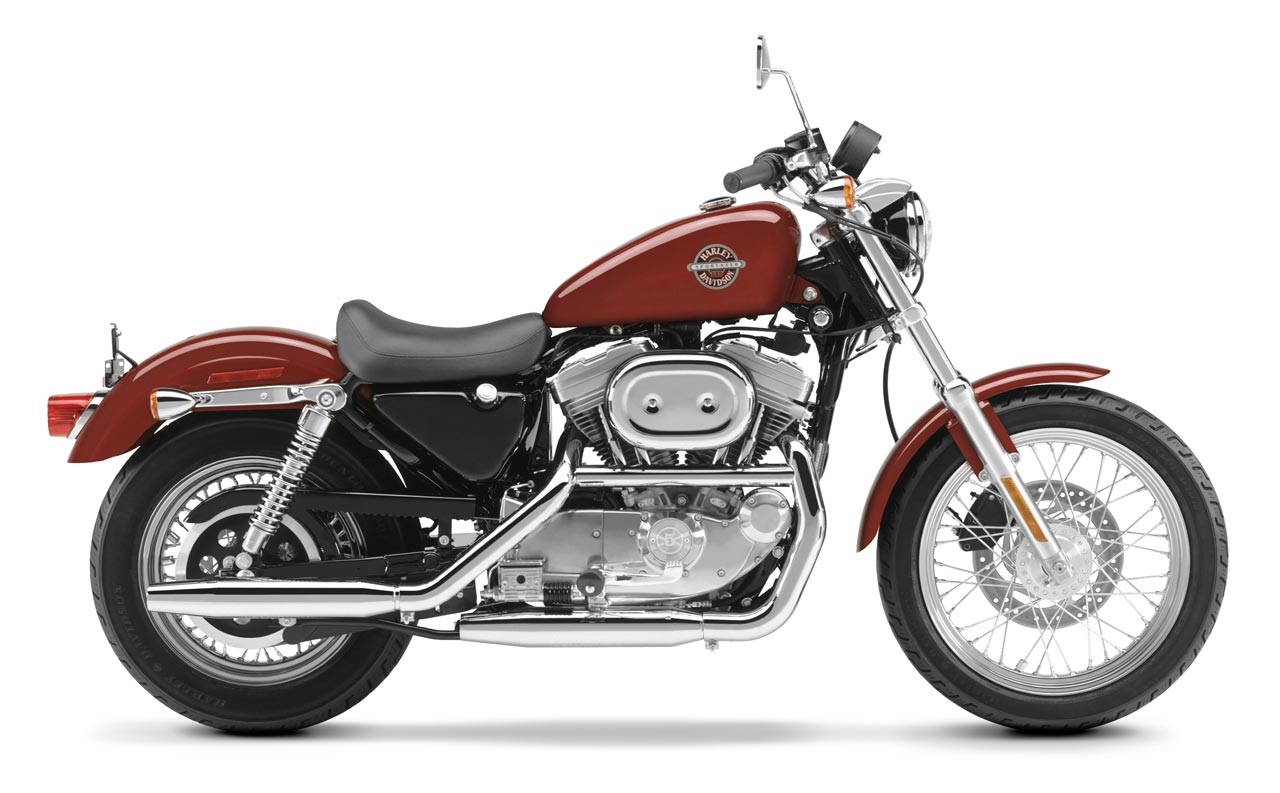
Harley-Davidson 883 Sportster
This may not be the most intuitive choice for a burner
bike, but if you like the idea of running about on
something with an historic brand name attached, this could
be a solution. In truth, the 883 series was long regarded
as the entry-level, read ‘poverty pack’, end of the H-D
offerings.
To some extent, that’s doing the bike a dis-service as they can be great fun to punt along. If it were my money, I’d be targeting late 1996 through to 2004. By this time you have some welcome updates to the entire package and it’s starting to feel a bit more like a modern motorcycle.
The performance is fun if you’re just using it to punt around, and there is a wealth of relatively cheap warm-up gear out there. Just derestricting the air intake and mufflers will achieve a lot.
Something people forget about this generation Harley is they are ridiculously easy to look after. Change the oil and tyres and keep an eye on the drive belt – that’s it. They’re running hydraulic lifters, so valve lash adjustment looks after itself.
Really, the appeal with these things is they’re a deceptively easy thing to care for and it’s something different from the usual run-of-the-mill. Prices vary hugely, sometimes depending on how delusional the seller is, but decent bikes in the 1996-2004 bracket can be had for $6-8k.
Basic stats: 883cc v-twin, 35kW, 260kg wet
For: Big name on the tank
Against: No sports bike
Prices: $6-8k
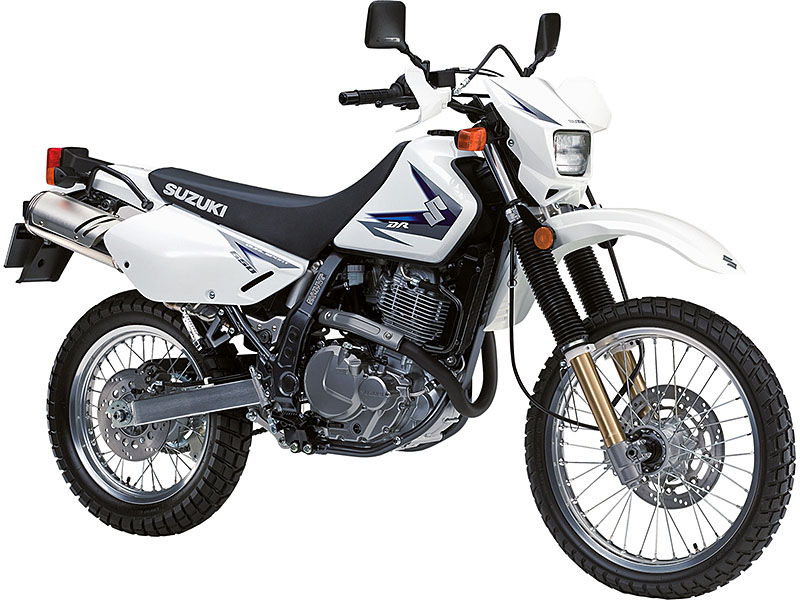
Suzuki DR650SE
Frankly, if you were preparing a motorcycle for a
trans-global adventure, you’d be mad to not at least
consider this one. You’d need to fit a bigger fuel tank
and maybe toughen up a few areas (such as heavy duty
spokes in the wheels), but it wouldn’t be a prohibitively
expensive exercise. And it would get you there.
The DR650SE is nothing radical. It’s an air-cooled 650 single-cylinder four-stroke, running a carburettor, and you can buy one new in 2019 that looks exactly like the one you could have bought new in 1997 – except for the graphics. You can put a factory-fresh one on the road for $8300 at the moment.
Packaging is basic but effective. The powerplant is known to be more or less unkillable and it will happily keep the bike humming along all day at respectable speeds. It’s not the greatest highway bike, but it will do the job willingly enough.
Meanwhile it’s compact enough to tackle some pretty ordinary surfaces without necessarily jumping on and turning its rider to pulp if it all goes pear-shaped.
Really, if the idea of an adventure tourer that doesn’t cost the price of a decent car has some appeal, this would be my first port of call. Second-hand bikes are available in big numbers, many of them already fitted with larger aftermarket fuel tanks. (The stocker is 13 litres.)
Prices start at $3000, while $6k is enough for a gem.
Basic stats: 644cc single, 32kW, 162kg wet
For: Versatile, tough
Against: Not a great highway bike
Prices: $3-8.5k
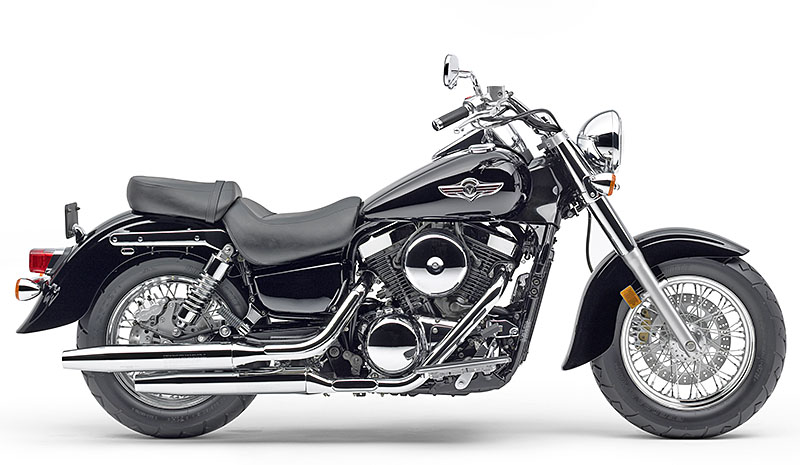
Kawasaki VN1500 Vulcan
If the Virago won early fans among Ulysses Club members,
the bigger 1500 Vulcan soon took over as the top dog.
Built from 1987 to 2008, the series generated a huge
number of variants over time and was, to Kawasaki’s
credit, continually updated and developed.
While it was never really at the cutting edge of motorcycle development, the big twin could be relied upon to deliver a decent level of performance and acceptable handling.
There was however a mechanical issue that popped up with these, up to 1999 build. In a very small percentage of cases, a plastic oil pump gear could fail. If you spotted the low pressure warning light in time, you could avoid serious damage. Kawasaki was reported to be good with warranty on this issue. The ultimate fix was to install a metal gear (later models had it), which is a couple of hours of labour for a mechanic.
That said, I’d be pretty comfortable with a used pre-1999 example that’s been cared for, particularly if budgeted in precautionary gear check.
Moving that issue aside, these things enjoy an exceptional reputation among owners, who have tended to do solid miles on them with big loads and without complaint.
While not the greatest handling package, they’re on a par with many cruiser offerings of the period and enjoy amiable and entirely predictable road manners. They’re pretty hard to beat on a bike-per-dollar basis, with prices starting in the mid fours and heading as high as $7k.
Basic stats: 1470cc v-twin, 47kW, 315kg wet
For: Long-lived and generally sorted
Against: Not particularly quick
Prices: $4.5-7k
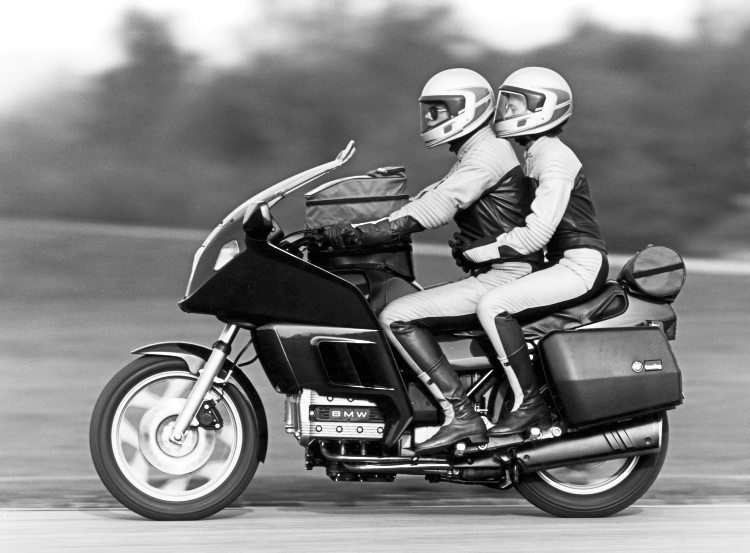
BMW K100/1100LT series
Back in the mid-eighties, BMW took this kinda weird techno
turn, steering away from its traditional boxer twins and
developing inline fours and triples. The weird part was
that, unlike any other motorcycle maker out there at the
time, they laid the engines on their side, along the frame
– so with the head poking out the left and the crankcase
the right.
Now there’s a whole history behind why and how this happened, all of which defies my theory that it was the result of a big night on the schnapps back at HQ. Never mind.
What the company succeeded in doing was definitely breaking its existing market mould and producing some interesting and very capable motorcycles. Of them, the big tourers presented the buyer with arguably the most intriguing contradiction: Sure they looked like barn doors with wheels, and had enormous carrying capacity, but they were in fact surprisingly nimble.
From 1988 you could get the K100LT eight-valve series, while the 1100 16-valvers took over from 1992. If you can afford the price premium, the later bike is worth the extra money, as it’s noticeably quicker and smoother.
What these things are legendary for is unkillable engines. A couple of hundred thousands kays is still a fair way from worn out. However the Achilles heel is the dry clutch and rear main seal, which is a bit of a bugger to fix thanks to its location. Anything with a slipping clutch or evidence of an oil leak under the bell housing should come with a significant discount. That said, they have the potential to offer a lot of proper mile-eating bike for the money.
Basic stats: 987/1092cc four, 65/73kW, 260/290kg wet
For: Much more capable than they look
Against: Look for clutch woes
Prices: $3-6k
***
My Burners
There are two burners, or sacrificial anodes, in the home
fleet: a Honda Blackbird and BMW K1100LT.
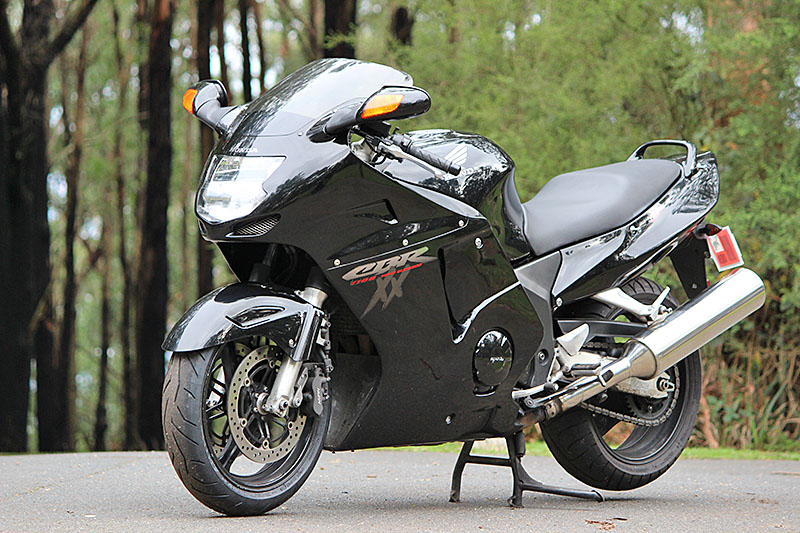
The Honda is a first-gen example that cost $3500 a few years ago and is often the go-to when I just don’t want to be messed around. Its mileage is nearing 70,000km and so far it’s cost sod-all to run.
Some servicing can take a little patience, as things such as spark plugs are well hidden under bodywork and an airbox, but fortunately that’s a once-every-blue-moon task.
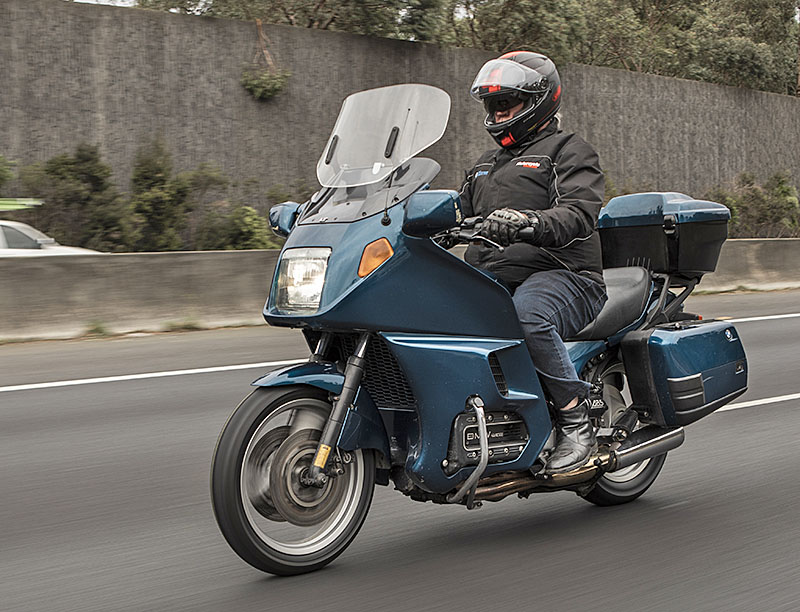
As for the BMW, it cost me $2600 about a year ago and promptly bit me on the wallet to the tune of a new rear main seal and clutch. However the numbers still added up. It serves the multiple roles of preferred transport in crap weather, or when I want to carry a lot of gear and/or want to go a long distance without fuss.
Both have turned out to be good buys.
-------------------------------------------------
Produced by AllMoto abn 61 400 694 722
Privacy: we do not collect cookies or any other data.
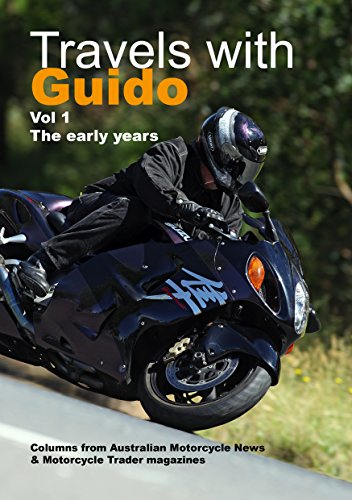
Archives
Contact



